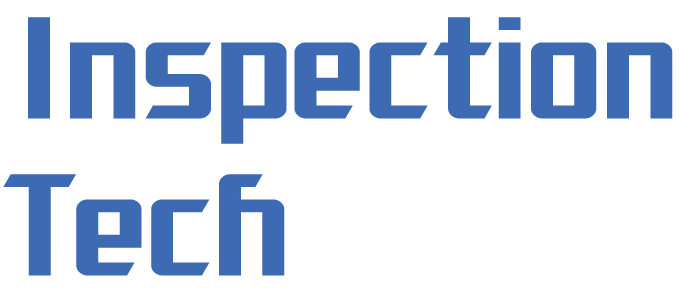Technical Library | 2015-08-27 15:32:16.0
Ever since there has been a widespread usage of surface mount parts, the trend of continued shrinkage of devices with ever finer pitches has continued to challenge PCB assemblers for the rework of same. Todays' pitches are commonly 0.5 to 0.4mm with packages of tiny outline sizes, 5 -10mm square, making the rework of such devices a challenge. In addition to the handling and inspection challenges comes the board density. Spacing to neighboring components continues to be compressed so the rework techniques should not damage neighboring components.
Technical Library | 2021-05-06 13:48:05.0
In this paper most commonly occurring Bare PCB defects such as Track Cut, Track short and Pad Damages are detected by Image processing techniques. Reference PCB without having any defects is compared with test PCB having defects to identify the defects and x-y coordinates of the center of the defects along with radii are obtained using Difference of Gaussian method and location of the individual type of defects are marked either by similar color or different colors. Result Analysis includes time taken for the inspection of a single defect, multiple similar defects, and multiple different defects. Time taken is ranging from 1.674 to 1.714 seconds if the individual type of defects are marked by different colors and 0.670 to 0.709 seconds if all the identified defects are marked by the same colors.
Technical Library | 2016-04-28 14:43:23.0
Underfilling is a long-standing process issued from the micro-electronics that can enhance the robustness and the reliability of first or second-level interconnects for a variety of electronic applications. Its usage is currently spreading across the industry fueled by the decreasing reliability margins induced by the miniaturization and interconnect pitch reduction. (...) This paper will address the control of surface mount under filled assemblies, focusing on applicable inspection techniques and possible options to overcome their limitations.
Technical Library | 2021-03-18 20:03:27.0
Much has been said and written about the accuracy of visual attribute inspections of potentially counterfeit components. The techniques and procedures being used to inspect counterfeit and reworked electronic components in the open marketplace can be quite effective in most cases.
Technical Library | 2017-06-22 17:11:53.0
C-mode scanning acoustic microscopy (C-SAM) is a non-destructive inspection technique showing the internal features of a specimen by ultrasound. The C-SAM is the preferred method for finding “air gaps” such as delamination, cracks, voids, and porosity. This paper presents evaluations performed on various advanced packages/assemblies especially flip-chip die version of ball grid array/column grid array (BGA/CGA) using C-SAM equipment. For comparison, representative x-ray images of the assemblies were also gathered to show key defect detection features of the two non-destructive techniques.
Technical Library | 2012-08-30 21:24:29.0
This paper provides definitions of the different voiding types encountered in Gull Wing solder joint geometries. It further provides corresponding reliability data that support some level of inclusion voiding in these solder joints and identifies the final criteria being applied for certain IBM Server applications. Such acceptance criteria can be applied using various available x-ray inspection techniques on a production or sample basis. The bulk of supporting data to date has been gathered through RoHS server exempt SnPb eutectic soldering operations but it is expected to provide a reasonable baseline for pending Pb-free solder applications.
Technical Library | 2021-09-15 18:44:20.0
Analyzing failures is a critical process in determining the physical root causes of problems. The process is complex, draws upon many different technical disciplines, and uses a variety of observation, inspection, and laboratory techniques. One of the key factors in properly performing a failure analysis is keeping an open mind while examining and analyzing the evidence to foster a clear, unbiased perspective of the failure.
Technical Library | 2021-05-06 13:45:49.0
The high-sensitive micro eddy-current testing (ECT) probe composed of planar meander coil as an exciter and spin-valve giant magneto-resistance (SV-GMR) sensor as a magnetic sensor for bare printed circuit board (PCB) inspection is proposed in this paper. The high-sensitive micro ECT probe detects the magnetic field distribution on the bare PCB and the image processing technique analyzes output signal achieved from the ECT probe to exhibit and to identify the defects occurred on the PCB conductor. The inspection results of the bare PCB model show that the proposed ECT probe with the image processing technique can be applied to bare PCB inspection. Furthermore, the signal variations are investigated to prove the possibility of applying the proposed ECT probe to inspect the high-density PCB that PCB conductor width and gap are less than 100 μm.
Technical Library | 2017-08-28 17:14:41.0
PCB suppliers in the automotive space are vastly accelerating their time to market by using automated optical inspection (AOI) systems during PCB assembly. However, this next-generation technique is not limited in scope to the automotive industry – it has powerful implications for the entire PCB industry.
Technical Library | 2021-11-22 20:44:44.0
Many automated optical inspection (AOI) companies use supervised object detection networks to inspect items, a technique which expends tremendous time and energy to mark defectives. Therefore, we propose an AOI system which uses an unsupervised learning network as the base algorithm to simultaneously generate anomaly alerts and reduce labeling costs. This AOI system works by deploying the GANomaly neural network and the supervised network to the manufacturing system. To improve the ability to distinguish anomaly items from normal items in industry and enhance the overall performance of the manufacturing process, the system uses the structural similarity index (SSIM) as part of the loss function as well as the scoring parameters. Thus, the proposed system will achieve the requirements of smart factories in the future (Industry 4.0).

Our Company handle AOI (Auto Optical Inspection) and SPI (Solder Paste Inspection) Machines.
Equipment Dealer / Broker / Auctions
Hwaseong-si, Gyeonggi-do, Korea
Hwaseong-si, South Korea
Phone: +82-1029254936